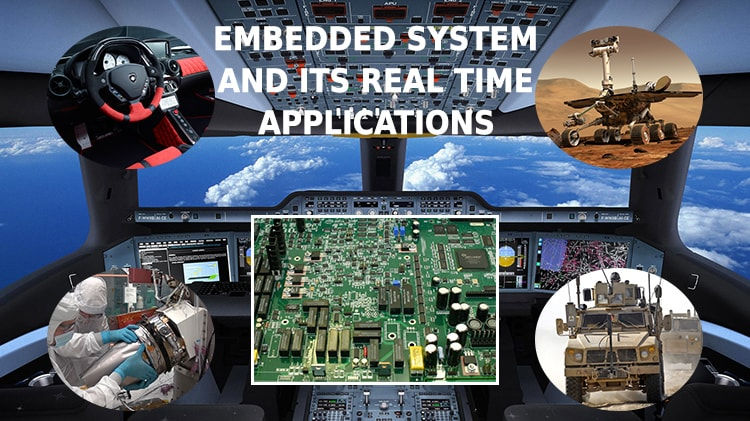Embedded System
As the name implies embedded represents something that is connected to something important. An embedded machine may be thought of as a device hardware machine with applications installed in it. An embedded device can be an isolated machine or it can be part of a wide network. An embedded system is a microcontroller or a microprocessor-based system designed to perform a specific task. For example, a fire alarm is an embedded system; it only feels smoke.
An embedded system has three components −
- It has hardware.
- It has application software.
- It has a Real-Time Operating System (RTOS) that monitors the application software and provides a mechanism to allow the processor to run the process according to schedule by following a plan to control the latencies. RTOS describes how the program operates. It sets the rules for the execution of the application program. The small-scale built-in system may not have RTOS.
So, we can define an embedded system as a microcontroller-based, software-driven, reliable and real-time control system.
Characteristics of an Embedded System
- Single-functioned − An embedded device normally executes a complex procedure and does the same thing repeatedly. For example, a pager always functions as a pager.
- Tightly constrained − All computer devices have constraints on architecture parameters, but those on an embedded device may be especially close. Design metrics are a measure of the features of the implementation such as its cost, size, power and performance. It must be of a scale that suits a single processor, must work quickly enough to process data in real-time and must use minimal power to prolong the battery life.
- Reactive and Real-time − Many embedded systems must react continuously to changes in the system environment and must calculate certain results in real-time without delay. Consider the example of a car cruise controller; it continuously monitors and reacts to speed and brake sensors. It will continuously measure acceleration or deceleration within a short amount of time; delayed computation can fail to drive the vehicle.
- Microprocessors based − It must be microprocessor or microcontroller-based.
- Memory − It must have a memory, as its software usually embeds in ROM. It does not need any secondary memories in the computer.
- Connected − It must have connected peripherals to connect input and output devices.
- HW-SW systems − Software is used for more features and flexibility. Hardware is used for performance and security.
Types of Embedded Systems
Embedded systems can be classified into different types based on performance, functional requirements and performance of the microcontroller.
Types of Embedded Systems
Embedded systems are classified into four categories based on their performance and functional requirements:
- Standalone embedded systems
- Real-time embedded systems
- Networked embedded systems
- Mobile embedded systems
Embedded Systems are classified into three types based on the performance of the microcontroller such as
- Small scale embedded systems
- Medium-scale embedded systems
- Sophisticated embedded systems
Applications of Embedded Systems
Some real-life applications of embedded systems are as follows:
- Consumer electronics – Televisions and digital cameras, computer printers, video game consoles and home entertainment systems like PS4.
- Household appliances – Refrigerators, washing machines, microwave ovens and air conditioners.
- Medical equipment – Scanners like those for MRI, CT, ECG machines, devices to monitor blood pressure and heartbeat.
- Automobiles – Fuel injection systems, anti-lock braking systems, music and entertainment systems and controls for air-conditioners.
- Industrial applications – Assembly lines, systems for feedback and systems for data collection.
- Aerospace – Systems for navigation and guidance, GPS.
- Communications – Routers and satellite phones.

